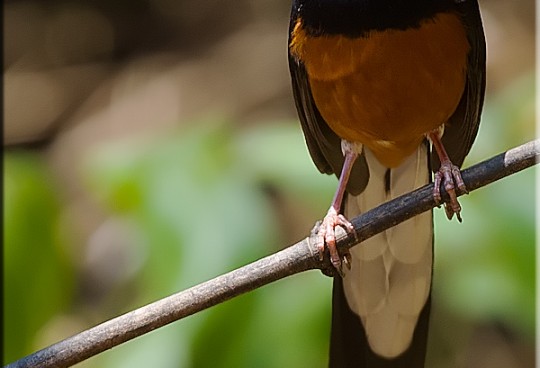The oriental turtle dove or rufous turtle dove (Streptopelia orientalis) is a member of the bird family Columbidae. The species is has a wide native distribution range from Europe, east across Asia to Japan. The populations show variations in the patterning of plumage and have been designated into at least six named subspecies. Populations in the higher latitudes tend to migrate south in winter while those closer to the tropics are sedentary. Vagrants have been recorded in North America. The species is predominantly granivorous and forages on the ground.The genus name Streptopelia is from Ancient Greek streptos, “collar” and peleia, “dove”. The specific orientalis is Latin for “eastern”, in this case referring to the type locality, China.
The Oriental turtle dove has two distinct migratory northern races, S. o. orientalis in the central Siberian taiga, and S. o. meena in open woodland of central Asia. The differences in the tail patterns of the forms S. o. orientalis and S. o. meena help separate identification in their wintering grounds. The nominate form is described as having a grey tip to the tail and more black in the outer web of the outer tail-feathers, while the meena has a white tip to its tail like the turtle dove and less black in the outer web of the outer tail-feathers. However, these are not consistent differences: both forms can have white or grey tail-bands, and orientalis can have little black in the outer webs of the outer tail-feathers. This small species is very similar in plumage to its European counterpart, the turtle dove. It is a little larger than that species, particularly in the case of orientalis, about the same size as a collared dove. It shares the black and white striped patch on the side of its neck made of silver-tipped feathers, but the breast is less pink, and the orange-brown wing feathers of the turtle dove are replaced with a browner hue, and darker centres giving a scaly appearance. The tail is wedge shaped, like the turtle dove. The flight is more relaxed and direct than that of its relative. The habitat varies but it breeds in well-wooded but open habitats and winters in more open habitats but usually with good tree cover. This species forages on the ground and is known to consume seeds of hemp, sunflower, wheat, millets and amaranth, and gastropods. This species is classified as least concern by IUCN.
![]()






Sorry, the comment form is closed at this time.